Part 2 of 2 Parts (Please read Part 1 next)
Kairos will also face the challenge of sourcing the TRISO fuel it needs which contains a more enriched form of uranium than current nuclear plants use. Currently, not enough of it is produced. However, the company argues that customer demand, like that from Google, “sends a meaningful signal” to producers.
For nuclear tech companies, SMRs are appealing because their size means that they can be built closer to the grid than traditional nuclear power plants. It is claimed that they’re faster to build, and cost less. An Amazon spokesperson said that “We remain committed to renewable energy and have been the largest corporate purchaser for four years in a row. But we know we’ll also need other sources of reliable carbon-free energy to meet the growing needs of our business. Expanding our energy investment strategy to include other forms of carbon-free energy, including nuclear, is the most viable option to help bridge this gap.”
The “‘always-on’ nature of nuclear is valuable,” says a Google spokesperson. In reality, the average commercial nuclear power reactor is operational about ninety five percent of the time. Google mentions that the company is continuing to deploy new wind, solar, geothermal, and battery storage projects. Geothermal power can also provide the 24/7 energy that data centers need. Google recently worked with a startup to help deploy a next-generation geothermal power plant that could be used in more locations.
Kairos says it’s possible to come to bring TRISO reactors to market very quickly. A spokesperson said that “The conventional nuclear development model is long, slow, and capital-intensive. Kairos Power is disrupting that model by embracing a rapid iterative approach, which accelerates test cycles for innovation and optimization.”
With respect to its new demonstration reactor, the company got the first construction permit for a nontraditional nuclear reactor to be issued by the Nuclear Regulatory Commission (NRC) in more than fifty years. The company intends to begin running its demonstration reactor in 2027. They hope to have the first reactor for Google running just three years later.
Lyman is very skeptical that new advanced nuclear plants could be ready to run on schedule by the end of the decade. He remarked that “Tech companies see themselves as visionaries. They don’t like to hear naysayers. They think they’re the masters of the universe. But the fact is that nuclear power is kind of resistant to significant improvements that reduce the cost in time to build safe facilities. There’s just a lot of development and it’s very slow and painstaking work. It’s not building something in your garage with circuit boards.”
The advanced nuclear reactor projects will also have to get regulatory approval from the NRC. Attempts to reopen older nuclear power plants that have been closed like Microsoft’s plan to restart a reactor at Three Mile Island could also face fatal challenges.
It makes sense for nuclear tech companies with aggressive goals to cut emissions to be looking for multiple new solutions. However, given the immediate need for more clean energy for data centers now, it’s not exactly clear why they aren’t filling the gap with even more of the renewable solutions that already exist and don’t produce nuclear waste.
Lyman says, “I certainly don’t think any of these timelines are realistic. At best, they’re going to get a few boutique reactors that will be really expensive to run, and will probably end up being more of a headache for them than anything else.”
Blog
-

Nuclear Reactors 1444 – Major Corporations Are Investing In New Advanced Nuclear Reactors Designs Utilizing TRISO Fuel To Power Data Center – Part 2 of 2 Parts
-
Nuclear News Roundup Nov 08, 2024
Oklo says it has secured 750 MW data center agreements world-nuclear-news.org
Nuclear provides jobs boost to Bristol, says EDF Energy world-nuclear-news.org
U.S. Backs Global Forum Against Nuclear Terror Threat miragenews.com
Pentagon Reports to Congress on U.S. Nuclear Strategy miragenews.com -
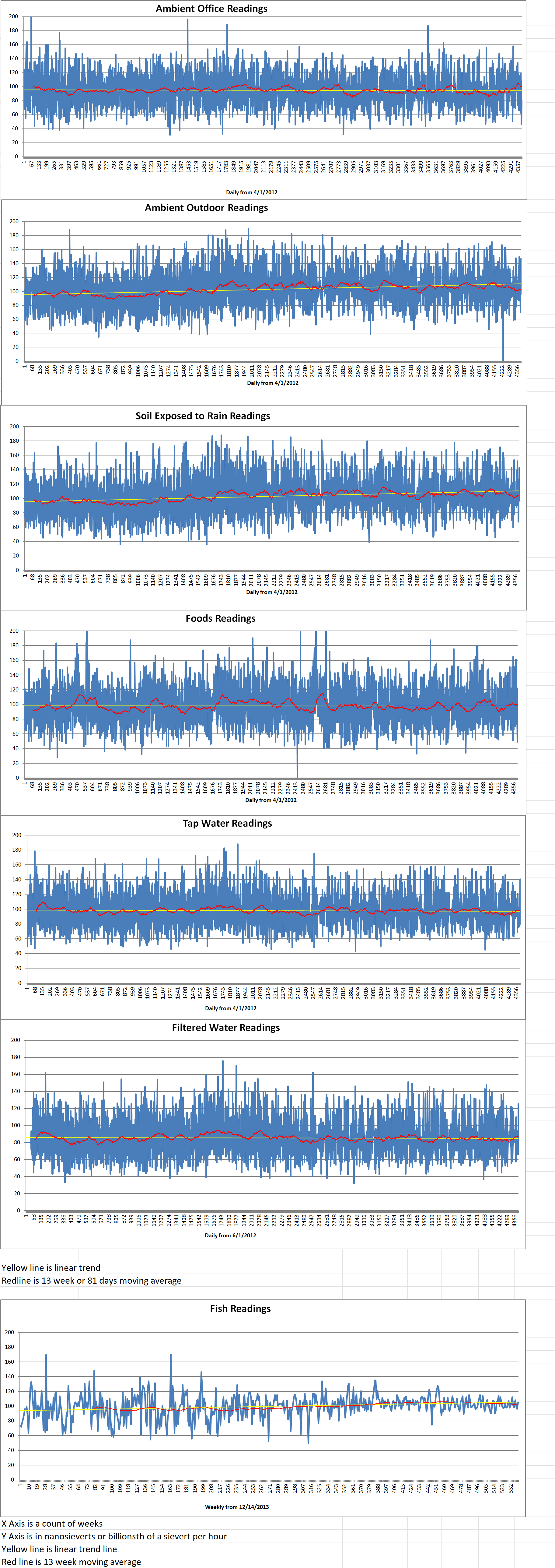
Geiger Readings for Nov 08, 2024
Ambient office = 76 nanosieverts per hour
Ambient outside = 147 nanosieverts per hour
Soil exposed to rain water = 143 nanosieverts per hour
Green onion from Central Market = 100 nanosieverts per hour
Tap water = 140 nanosieverts per hour
Filter water = 126 nanosieverts per hour
-
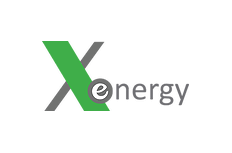
Nuclear Reactors 1443 – Major Corporations Are Investing In New Advanced Nuclear Reactors Designs Utilizing TRISO Fuel To Power Data Center – Part 1 of 2 Parts
Part 1 of 2 Parts
Tech companies are scrambling to find new power sources for AI’s huge energy needs. Some of them are turning to startups that are developing new nuclear technology. Google recently announced that it plans to start using power from Kairos Power’s small modular reactors (SMRs) by 2030. Amazon is investing in X-Energy, which is another nuclear startup. Microsoft hasn’t yet announced a similar investment. However, Microsoft recently agreed to purchase electricity from Helion Energy’s first fusion power plant, scheduled for deployment in 2028.
Nuclear boosters claim that the newest nuclear tech is safer and more sustainable than traditional nuclear power plants. However, some critics argue that next generation “advanced” nuclear technology isn’t necessarily that advanced and that it’s unlikely to be ready on the timeline that Big Tech wants.
Ed Lyman is the director of the nuclear power safety program at the nonprofit Union of Concerned Scientists. He said, “I think it’s highly unlikely that these reactors are going to perform the way that their developers are promising.”
X-Energy is making a small reactor filled with fuel “pebbles”, each around the size of a billiard ball. They contain thousands of tiny particles of uranium that are each surrounded by layers of carbon. This type of fuel is “tristructural isotropic” fuel (TRISO). The Department of Energy (DoE) calls it “the most robust nuclear fuel on Earth,” a claim that Lyman says is “wildly overhyped.”
TRISO fuel continuously rotates through the core of the reactor, along with helium that absorbs the heat. The heat turns water into steam which drives a turbine to make electricity. The X-Energy claims that its design is “meltdown-proof” and says the particles “retain their integrity under all foreseeable conditions.”
Lyman wrote a detailed report about next-gen nuclear reactors in 2021 and closely follows the industry. He argues that it’s too early to say that it’s safe. He explains that “X-Energy’s specific fuel type has not yet been tested under any circumstances.” When TRISO fuel from another manufacturer was tested in a reactor at Idaho National Laboratory, the experiment had to stop early because it was producing high levels of radioactive cesium at certain temperatures. X-Energy also claims that its fuel is so inherently safe that a containment building isn’t necessary, but Lyman disagrees. He says that the reactors could be vulnerable to air or water leaks, and that the TRISO fuel has to be made to exacting specifications that have yet to be proven. He adds that “They’re still kind of basing all their safety analyses on optimistic assumptions.”
X-Energy says their reactors run efficiently, using more than ninety percent of the available uranium in each pebble. However, Lyman says it’s less efficient than traditional nuclear power plants and that it generates more radioactive waste. The spent fuel will be stored on site for the 60-year life of the reactor. After that the DoE will have to store it in a geological repository. So far, these repositories don’t exist, and nuclear waste from decades of older nuclear power plants is still piling up. The U.S. started to build a repository in Arizona at Yucca Mountain, but the project was canceled in 2011.
Kairos also uses TRISO fuel, with their own type of reactor. Lyman argues that there are other problems with the Kairos reactors. He says that the coolant that the company uses is corrosive and it could be difficult to find materials for the reactor that won’t be damaged by it. Kairos responded that it has done thousands of hours of testing with “very little corrosion” under normal operating conditions. Lyman still says that it’s too early in the process to know how the reactor will actually perform. Construction began in July on the company’s demonstration reactor in Oak Ridge, Tennessee.
The full-scale TRISO reactor will also release more tritium, a radioactive isotope of hydrogen, than existing nuclear power plants. Lyman argues the tritium poses a threat to the environment. Kairos says the levels of tritium release “do not pose a significant risk to public health or the environment.” They note that some level of tritium naturally exists in groundwater. They say that they will “conduct regular monitoring and mitigation efforts to limit any tritium releases.”
Please read Part 2 next -
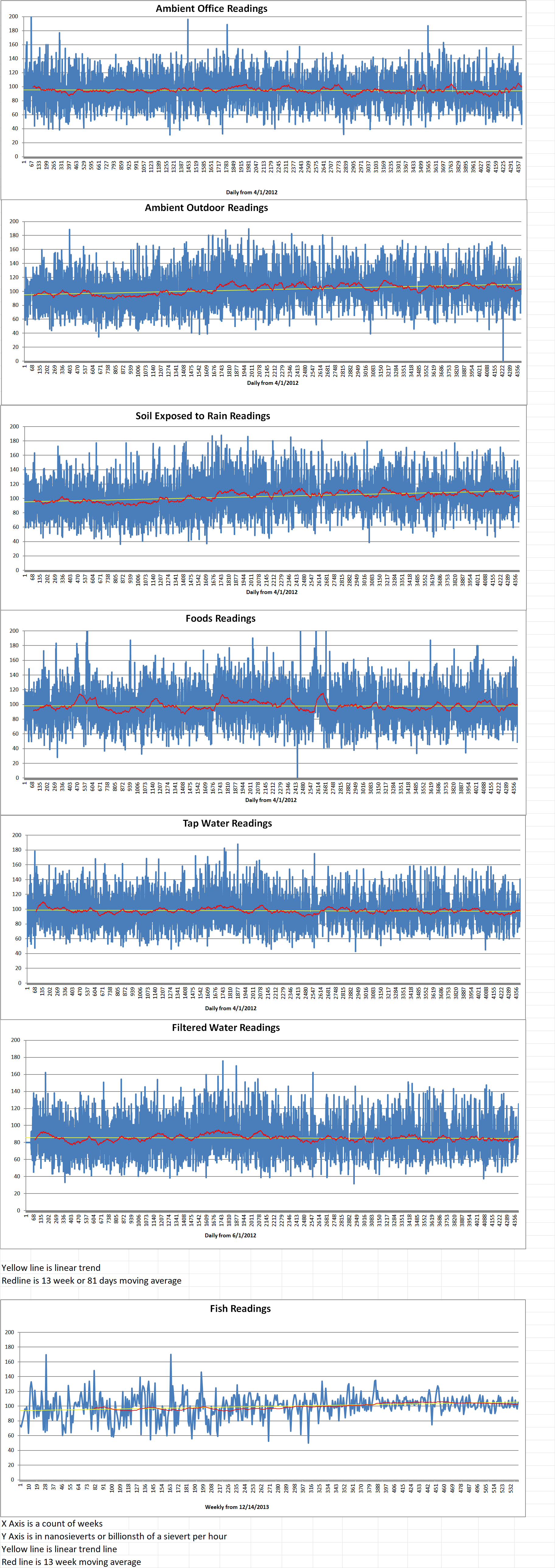
Geiger Readings for Nov 07, 2024
Ambient office = 73 nanosieverts per hour
Ambient outside = 96 nanosieverts per hour
Soil exposed to rain water = 97 nanosieverts per hour
Ginger root from Central Market = 80 nanosieverts per hour
Tap water = 112 nanosieverts per hour
Filter water = 103 nanosieverts per hour
-
Nuclear News Roundup Nov 07, 2024
-
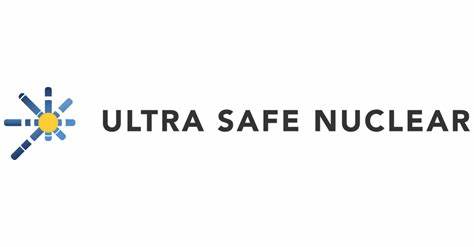
Nuclear Reactors 1445 – Ultra Safe Nuclear Corporation Files For Bankruptcy
A “micro” nuclear power plant start-up backed by the U.K. Government has filed for bankruptcy after the death of its main investor. Ultra Safe Nuclear Corporation (USNC) is based in Seattle, Washington. It is seeking bankruptcy protection in a last-ditch attempt to stave off collapse.
USNC has been developing micro modular reactors (MMRs), each with the capacity to generate up to fifteen megawatts of electricity. The MMRs could eventually be stacked together and used by industrial businesses as a source of both electricity and heat.
USNC received about thirty million dollars of grant funding support from the U.K government to further develop its designs based on optimism surrounding its technology. This funding was provided to help address “U.K. industrial demands including hydrogen and sustainable aviation fuel production”.
USNC said on Tuesday that it had been forced to file for Chapter 11 bankruptcy in the U.S. after running out of money. Bankruptcy is typically used to give a business breathing space while it seeks to reorganize debts or find new owners.
The bankruptcy filing follows the death of its most significant backer, Richard Hollis Helms, a former officer of the U.S. Central Intelligence Agency (CIA). He and his family have invested about one hundred million dollars in the venture and provided another twenty-five million dollars in loans. Mr. Helms sat on USNC’s board. He died in May 2024, leaving the company without its main financial patron.
Kurt Terrani is interim chief executive of USNC. In a filing in a Delaware court, he said, “Historically, USNC has primarily relied on equity investments to fund development efforts and operations. The most significant investor, Mr. Richard Hollis Helms, believed in the debtors’ inventions and their mission to provide reliable and safe zero-carbon energy anywhere.” USNC had been seeking to raise further funds since 2022 but had struggled to secure an “anchor investor”, he added.
Those efforts suffered a further blow following the death of Mr. Helms. Terrani continued, “Since then, the debtors have continued to search for new capital sources to continue funding their research and development efforts pending the full launch of their products and projects.”
The Dutch government, Japanese engineering giant Hyundai, German manufacturer Siemens, US software company Oracle and the Massachusetts Institute of Technology are among the company’s top 20 creditors.The bankruptcy filings also say USNC is in the process of seeking regulatory approval for its designs in the U.K., U.S. and Canada, as part of various demonstrator projects it is working on. They include the advanced modular reactor design project funded by the U.K., the Chalk River scheme with Ontario Power Generation in Canada, and the construction of a research reactor with the University of Illinois Urbana-Champaign in the U.S.
Other projects were underway in the U.S., Europe and Asia, with four considered to be in the “mature project development” phase and another fourteen backed by memorandums of understanding, the company said, adding that these schemes required “tens or hundreds of the MMRs”.
USNC says that it had lined up Standard Nuclear as a potential buyer of its fuel-related assets, which have been valued at twenty eight million dollars.
Richard Ollington is a nuclear expert and partner at Radiant Energy Group. He said the bankruptcy filing underlined the large numbers of small nuclear reactor start-ups currently in the market. Many of them are doomed to fail. He added that “There are more than eighty new reactor designs being developed. It’s inconceivable they will all get built at scale. There will be designs that fail to materialize.”
When funding was awarded to USNC in July 2023, the U.K. government said it was to “further develop the design of a high-temperature MMR”. It added that “Advanced modular reactors operate at a higher temperature than SMRs [small modular reactors] and as a result they could provide high-temperature heat for hydrogen and other industrial uses alongside nuclear power.” -
Nuclear News Roundup Nov 06, 2024
Kentucky Nuclear Energy Development Authority holds first public meeting weku.org
U.S. Hails New Backers of Nuclear Energy Expansion miragenews.com
Nuclear new build, SMRs and nuclear workforce development in focus during NEA visit to Hungary oecd-nea.org
COP29: Italy’s Meloni advocates nuclear energy as alternative to fossil fuels efe.com
-
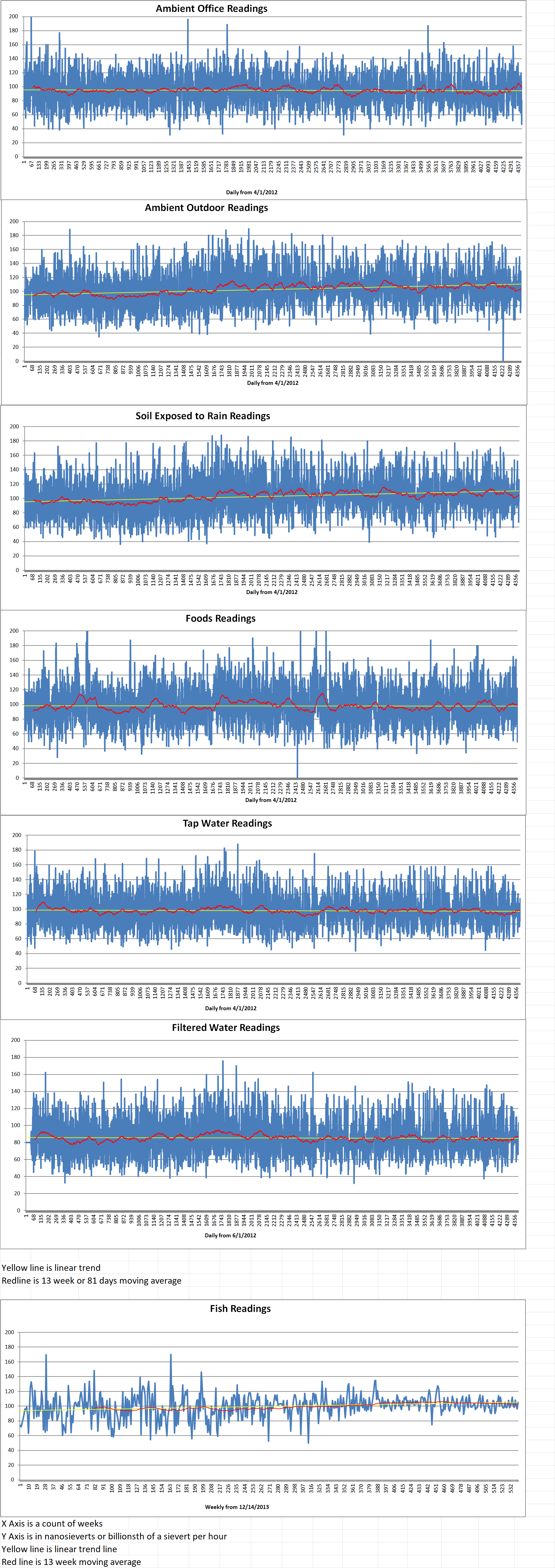
Geiger Readings for Nov 06, 2024
Ambient office = 73 nanosieverts per hour
Ambient outside = 100 nanosieverts per hour
Soil exposed to rain water = 100 nanosieverts per hour
Garlic from Central Market = 49 nanosieverts per hour
Tap water = 114 nanosieverts per hour
Filter water = 89 nanosieverts per hour
-

Nuclear Reactors 1444 – Major Corporations Are Investing In New Advanced Nuclear Reactors Designs Utilizing TRISO Fuel To Power Data Center – Part 2 of 2 Parts
Part 2 of 2 Parts (Please read Part 1 next)
Kairos will also face the challenge of sourcing the TRISO fuel it needs which contains a more enriched form of uranium than current nuclear plants use. Currently, not enough of it is produced. However, the company argues that customer demand, like that from Google, “sends a meaningful signal” to producers.
For nuclear tech companies, SMRs are appealing because their size means that they can be built closer to the grid than traditional nuclear power plants. It is claimed that they’re faster to build, and cost less. An Amazon spokesperson said that “We remain committed to renewable energy and have been the largest corporate purchaser for four years in a row. But we know we’ll also need other sources of reliable carbon-free energy to meet the growing needs of our business. Expanding our energy investment strategy to include other forms of carbon-free energy, including nuclear, is the most viable option to help bridge this gap.”
The “‘always-on’ nature of nuclear is valuable,” says a Google spokesperson. In reality, the average commercial nuclear power reactor is operational about ninety five percent of the time. Google mentions that the company is continuing to deploy new wind, solar, geothermal, and battery storage projects. Geothermal power can also provide the 24/7 energy that data centers need. Google recently worked with a startup to help deploy a next-generation geothermal power plant that could be used in more locations.
Kairos says it’s possible to come to bring TRISO reactors to market very quickly. A spokesperson said that “The conventional nuclear development model is long, slow, and capital-intensive. Kairos Power is disrupting that model by embracing a rapid iterative approach, which accelerates test cycles for innovation and optimization.”
With respect to its new demonstration reactor, the company got the first construction permit for a nontraditional nuclear reactor to be issued by the Nuclear Regulatory Commission (NRC) in more than fifty years. The company intends to begin running its demonstration reactor in 2027. They hope to have the first reactor for Google running just three years later.
Lyman is very skeptical that new advanced nuclear plants could be ready to run on schedule by the end of the decade. He remarked that “Tech companies see themselves as visionaries. They don’t like to hear naysayers. They think they’re the masters of the universe. But the fact is that nuclear power is kind of resistant to significant improvements that reduce the cost in time to build safe facilities. There’s just a lot of development and it’s very slow and painstaking work. It’s not building something in your garage with circuit boards.”
The advanced nuclear reactor projects will also have to get regulatory approval from the NRC. Attempts to reopen older nuclear power plants that have been closed like Microsoft’s plan to restart a reactor at Three Mile Island could also face fatal challenges.
It makes sense for nuclear tech companies with aggressive goals to cut emissions to be looking for multiple new solutions. However, given the immediate need for more clean energy for data centers now, it’s not exactly clear why they aren’t filling the gap with even more of the renewable solutions that already exist and don’t produce nuclear waste.
Lyman says, “I certainly don’t think any of these timelines are realistic. At best, they’re going to get a few boutique reactors that will be really expensive to run, and will probably end up being more of a headache for them than anything else.”
